
Holistic health remedies believed to help ease aches, increase energy and more can be found throughout Laguna.
By Ashley Breeding
Alternative health treatments, available for several years in the region, have recently started becoming part of mainstream health care practices. Many hospital systems in the U.S. now integrate some of these approaches—such as healing touch therapies like reiki in addition to acupuncture and even aromatherapy—to enhance care as part of an integrated approach.
Such modalities can help manage pain and alleviate symptoms of anxiety or depression among the sick. And healthy individuals striving to maintain optimal wellness can incorporate holistic practices into their routine as well.
Hydration Therapy
Also called vitamin injection therapy, this practice is just what it sounds like: a dose of vitamins administered intravenously, either through a shot or IV. That’s what’s offered at the Hydration Room, which has a location in Laguna Beach. Founder Dr. Brett Florie, M.D., who also has a degree in osteopathic medicine and is a board-certified anesthesiologist, began researching vitamin compounds and creating formulas for friends who were managing chronic diseases, like Crohn’s, as well as his wife, who suffered from migraines.
This process inspired him to open a clinic “focusing on the body and what we can do with just vitamins,” says Shaun Hayward, director of business development. The first clinic opened in Newport Beach in 2014 followed by the Laguna location the next year. “Now we have 20 clinics where we’ve treated over 90,000 patients,” Hayward says.
IV hydration isn’t just for the ill; it can benefit athletes (pre- and post-competition); the elderly, who might not be drinking enough water; and even ease a gnarly hangover after a night at the Dirty Bird.
How it works: You’ll be assessed by a nurse who will customize a formula. Those who have received lab work from a general practitioner are advised to bring that along to help determine any vitamin deficiencies, Hayward notes. A menu of over 25 IV and injection therapies (further tailored to individual needs) includes such compounds as vitamin C for immune support and skin health; B vitamins for mental clarity and energy; and anti-inflammatories to help athletes with lactic acid build-up.
“We see a lot of athletes,” Hayward mentions, “from golfers to marathoners to NFL players. We also see the average person at the start of their fitness journey or a fitness buff, who is looking for recovery or [to] prevent any injuries.”
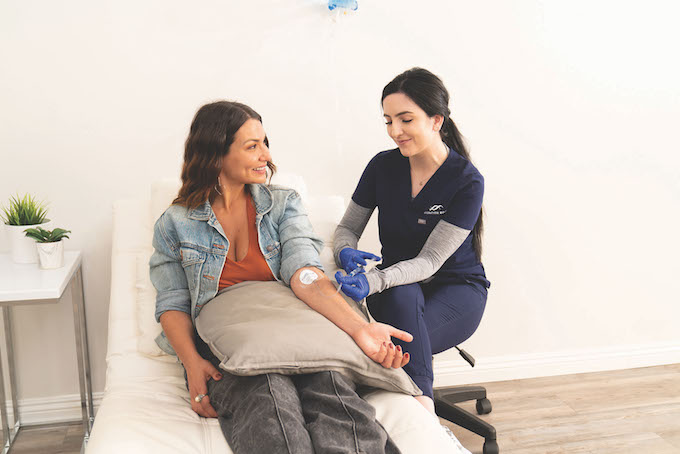
Next, you’ll relax in a lounge chair—choose between a communal setting and a private room—as a cannula is inserted into your inner arm and a liter of electrolyte fluid mixed with vitamins drips into your veins. This can cause light chills, so bring a sweater.
So why not just adjust your diet or pop a supplement? “Your body only absorbs 10% to 25% of vitamins through either of those,” Hayward asserts, “while with IV, it’s 100%.”
Consultations are free and include a complimentary vitamin B12 shot. Formulas range from $25 to $250 in addition to some add-ons and premium options. Frequency of treatment depends on your diagnosis and lifestyle. But Hayward recommends everyone come “at the first sign of a sniffle or scratchy throat.”
At Executive Esthetics med spa, target myriad issues with one of six different IV therapy treatments, including a B12 Boost, which promises sustained energy without unpleasant jitters or a crash; Inner Beauty, formulated to fight wrinkles, acne and other skin afflictions; and Brainstorm, said to improve memory and cognitive function.
Cryotherapy
If needles aren’t your thing, how about extreme cold—spending three minutes in temperatures between -166 and -220 F to ease aches and pains? Sound insufferable? “It’s a dry cold, so it’s a lot easier than it sounds,” promises Danielle Logan, owner of Cryo Haus.
The practice of cryotherapy, or cold therapy, originated in Japan in the late 1970s to treat rheumatoid arthritis, and evolved in Europe as a noninvasive procedure for various health woes, according to CryoCareUSA.
“The main purpose of cryotherapy is to reduce inflammation,” explains Logan, whose spa features two different pieces
of equipment.
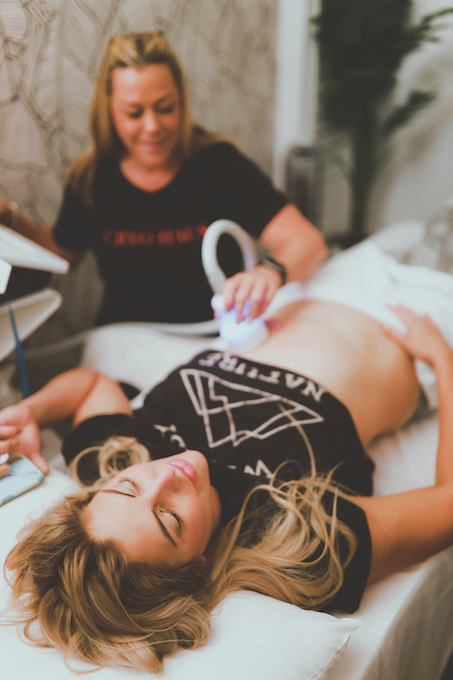
The Cryo T-Shock machine offers localized treatment to a specific area, “similar to intense icing” for an injury or for localized fat freezing procedures, she says. “It literally kills fat cells,” Logan says. Many clients also use thermal shock (sometimes alternating hot and cold) for its slimming effect.
The other machine is a fully enclosed cryotherapy chamber that treats the entire body. To help pass the time, Cryo Haus will use Bluetooth to play your favorite three-minute song. In addition to reducing inflammation, other reported benefits of the whole body cryotherapy include increased energy, improved blood circulation, calorie burn and a major mood boost.
For inflammation, Logan recommends treatments three times a week for about three to four weeks, then once a week for maintenance.
CryoCare USA in Laguna also offers an extensive menu of cryotherapies, including whole body cryotherapy, localized spot treatments and the Cryo Facial, targeting wrinkles and fine lines while brightening dark spots and tightening pores.
For whole body cryotherapy, you’ll wear protective clothing—like cotton socks, gloves, underwear and a band to cover ears—before entering a Cryosauna, which emits cold, dry air to lower surface skin temperature by 30 to 50 degrees in a matter of minutes. According to CryoCare USA, the cold causes the skin to send messages to the brain, acting as a stimulant to the body’s regulatory functions. The exposure to extreme temperatures also triggers the release of endorphins and anti-inflammatory molecules.
Like any alternative treatment, checking with a physician beforehand is always advised as cryotherapy is not recommended for those with certain conditions.
Acupuncture
In Chinese medicine, physical symptoms often indicate something more complex: “Emotions such as fear, grief and worry can manifest as physical symptoms within the body in the form of digestive issues [and] headaches … [while] insomnia, depression and anxiety can be triggered by physical symptoms,” explains Jiwani Acupuncture owner Dr. Noorani Jiwani, who is a licensed acupuncturist and has a Doctor of Acupuncture and Oriental Medicine degree. For that reason, her practice doesn’t focus solely on the physical body. Rather, “it diagnoses an individual as a whole being, rather than a list of symptoms,” she says.
How it works: Acupuncture refers to the movement of energy within the body. “It works on the person as a whole: mind, body, spirit,” Jiwani says. More specifically, it’s the practice of manipulating this flow of energy (called Qi) by inserting hair-thin needles on certain points of the body, which are thought to be connected by meridians, or pathways, along which this energy flows.
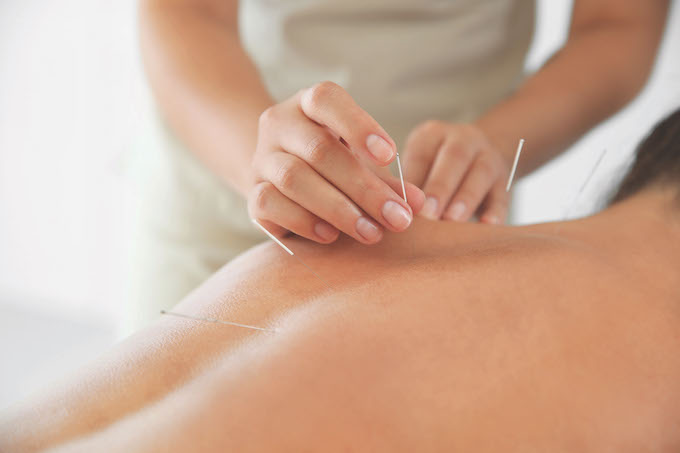
Jiwani combines traditional Chinese medicine and acupuncture as learned from mentors and experience in her practice as well as Japanese meridian therapy based on channel theory. She also uses pulse, palpation and five element acupuncture based on a person’s constitutional element.
“This allows me to get the most accurate diagnosis possible to create the most effective treatment,” she says. A patient is assessed from the moment they walk in. “How a person speaks, carries themselves, how they move [and] what they talk about,” she explains, adding that health history also adds into the equation.
Sessions last 60 to 70 minutes and are done in conjunction with cupping (suction) and moxibustion (heat), based on the individual’s needs. How many sessions a person requires, and how often, depend on whether a condition is acute or chronic, but “an average of six to eight weekly sessions are needed to initially address any issue,” Jiwani says. Afterward, a treatment plan is reevaluated and may be tapered down.
“Acupuncture and Eastern medicine are a journey into mental, emotional and physical health,” Jiwani says. “They teach us to respect our bodies, experiences and traumas, and not look for a quick fix, but rather long-term health.”
Reiki
Certified reiki master Kerry Walker-Collins says this Japanese energy healing technique—ideal for people with conditions ranging from chronic pain to mental distress—“promotes relaxation and reduces stress and anxiety through gentle touch.” According to the Cleveland Clinic, considered one of the nation’s top hospitals, reiki can increase the efficacy of other treatments, but should not be used as a substitute for consulting a physician.
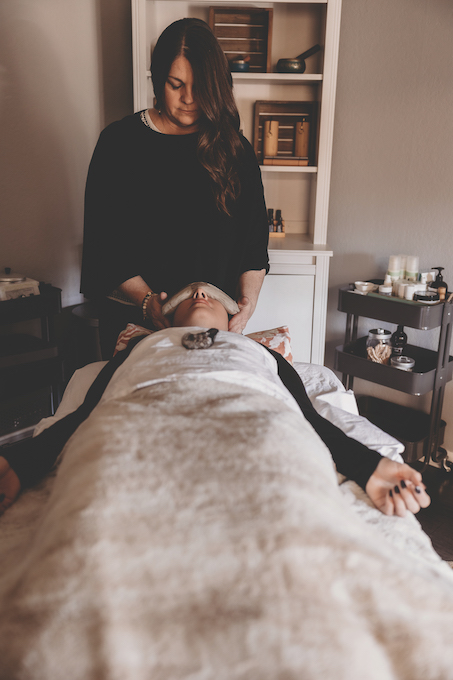
In 2008, Walker-Collins founded Mystic Reiki & Wellness in Laguna, where she says “practitioners use our hands to deliver energy to your body, improving the flow and balance of your energy to support healing.”
Based on the teachings of Mikao Usui, who established his school in 1922 in Tokyo, reiki translates to “spiritually guided life force energy,” reflecting the force that flows through all living things. Used to relieve stress and tension and promote overall wellness, reiki is being used more in traditional health care settings, even as an option to help patients prepare for and recover from surgery.
How it works: During a session—options include 60 or 90 minutes or an in-depth reiki renewal lasting two or three hours—you’ll lay face-up and fully clothed on a massage table as the reiki practitioner “gently places their hands, palms down, on or just above your body in specific energy locations. … The length of time [they] leave their hands in an area is determined by the flow of energy through their hands at each location,” Walker-Collins explains.
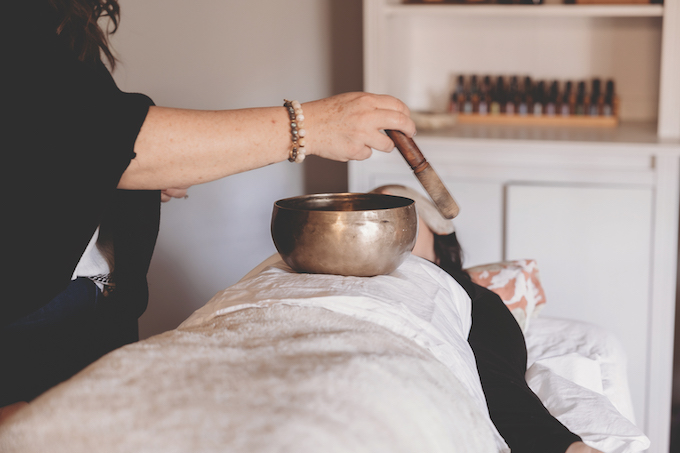
Sensations of heat, tingling and pulsing are often reported, as are energetic movements throughout the body. “Most people still feel very relaxed and peaceful during treatment,” she adds, and falling asleep
is common.
Mystic practitioners integrate sound healing, essential oils and crystals into sessions. While the practice traditionally has been hands-on, Walker-Collins can also administer healing energy through phone and Zoom.
“We learn a specific technique to administer reiki directly to a client via space and time,” she explains, “enabling the practitioner to work remotely.”
